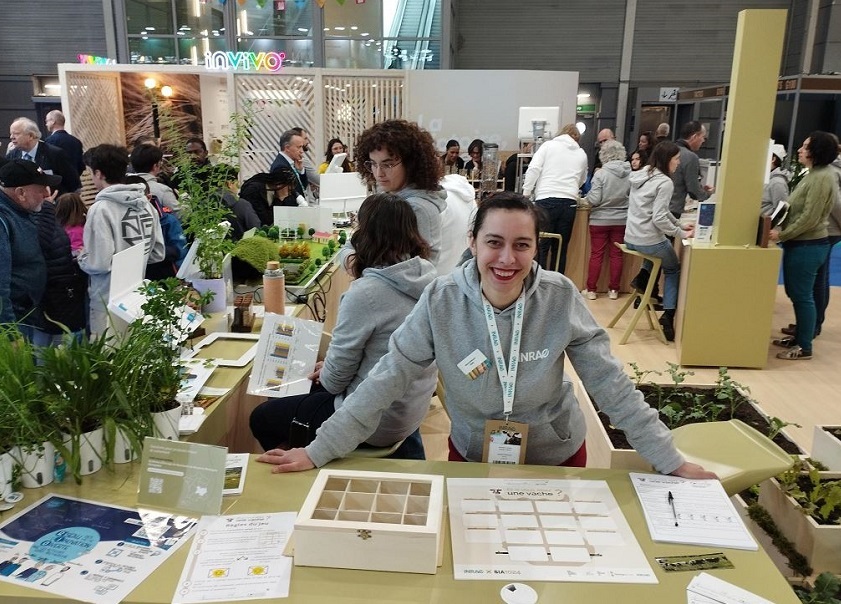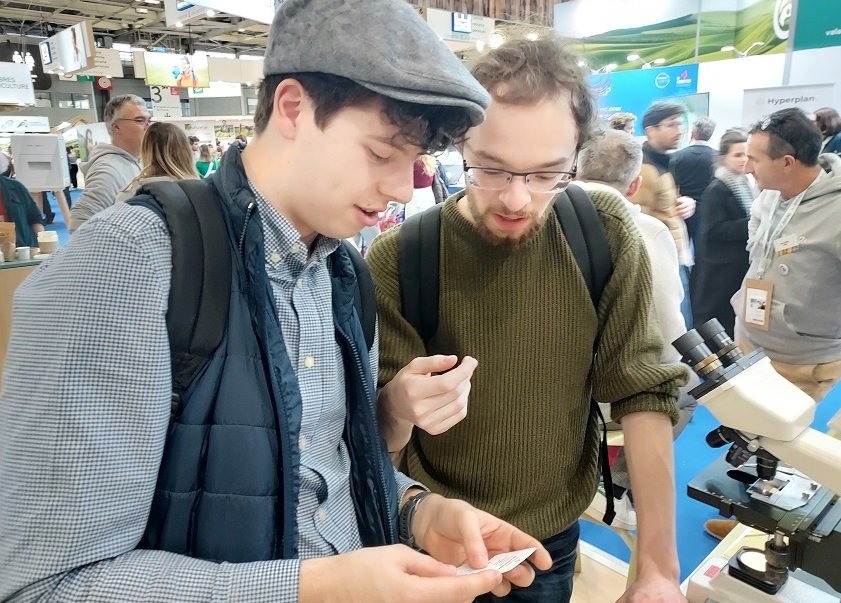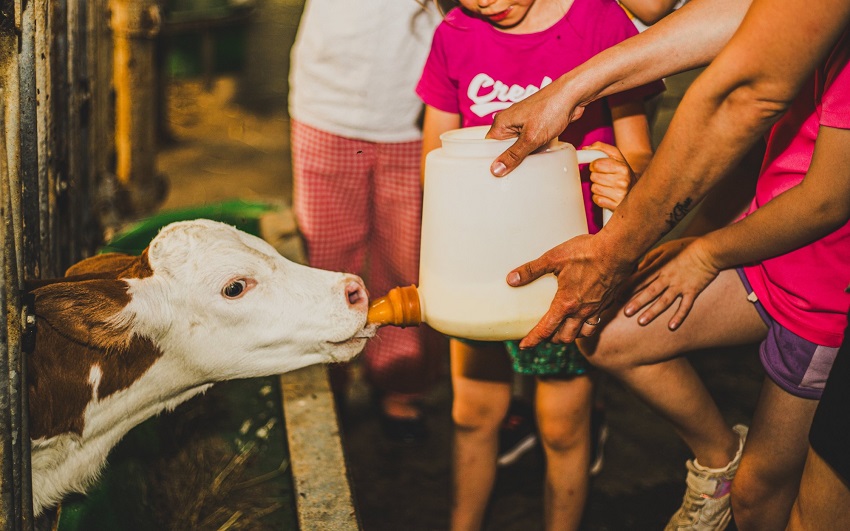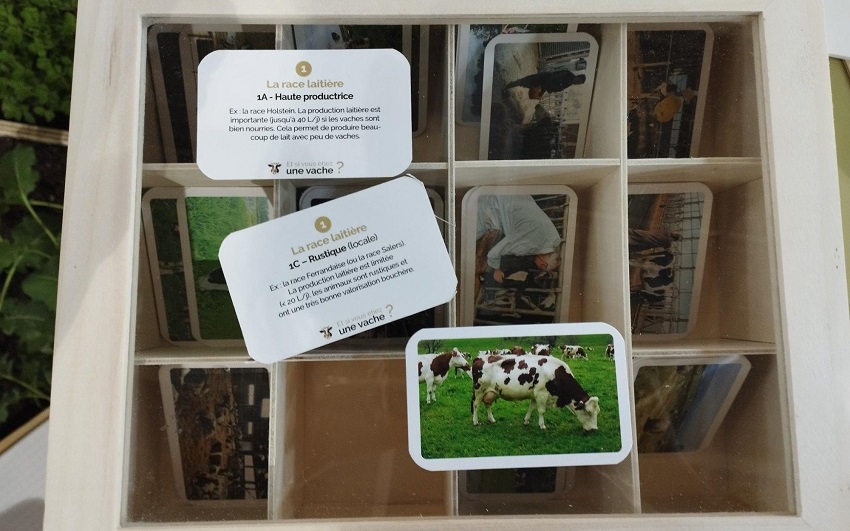Livestock farming often has a negative reputation because of its impact on both the environment and animal welfare. But agroecologically-minded farmers and policy makers are making headway, by creating opportunities for dialogue between themselves and citizens.
Research connected with our innovation hub Coccinelle, based in the mountainous Massif Central region of France, recently studied how upland dairy farming is perceived by citizens (referred to as ‘players’ in the study), by engaging them in a specially designed quiz [1].
Quiz identifies out preferred ‘dimensions’ of dairy farming practices
Groups of players (160 in total), made up of farmers and citizens (many with no background in agriculture) selected their preferred, neutral or unacceptable farming practices.
Players were shown sets of 36 picture cards, grouped into 12 ‘dimensions’ of three cards each that represented elements of dairy farming. Each dimension illustrated an alternative practice, with a photo on the front and a short text on the back explaining the advantages of this practice for the animal and the farmer.
Groups of cards covered cow breeds, dehorning, reproduction strategies, milking, calf rearing, routine herd health monitoring and human-animal interactions. Others looked at how animals are cared for over the winter period, housing facilities, types of fodder, and scratching equipment, and initiated conversation about types of pastures and fencing during the grazing season.


Four options were usually considered among the best farming practices
The four practices most often praised by player were:
- Rearing calves with their mother, compared with early mother-calf separation,
- A positive human-animal relationship resulting from frequent gentle contacts between the farmer and his/her animals,
- Straw-bedded stabling during winter,
- Grazing animals in pastures with ample tree shade.
Player background influenced perception of two practices
Players’ backgrounds had a significant influence on their perception of two practices in particular.
- Players who rarely interact with farmers (less than twice a year) especially liked to see calves reared with their mother, confirming that, conversely, separating calves early from their mother is considered unacceptable for a number of citizens.
- Players whose interactions with farmers were less frequent considered the use of artificial insemination in a more negative light than those who had more frequent interactions with farmers.
Some effects of age, no effect of gender
Older players had a more negative perception of both health monitoring using sensors and using rotating brushes for scratching, suggesting an age-related attitude towards technologically-based farming practices.
Meanwhile, gender had no significant effect on responses, in line with previous studies on the perception of livestock farming practices [2].


Quiz helps identify how dairy farming is perceived
Identifying farming practices that are considered negative is a good starting point for initiating dialogue between citizens and farmers, and co-designing farming practices in line with societal expectations.
Two dimensions that appear to be the most contentious for citizens – calf-rearing and insemination - have surfaced as the ones needing the most communication about why farmers chose these practices. They could also be seen by livestock professionals as the ones requiring change and serve as a lever for greater acceptance of dairy farming.
Find out more
This quiz is part of a citizen consultation process and is added to the various participative approaches developed by Coccinelle, including the use of serious games and the involvement of citizens in co-design workshops [3].
References
[1] Chassaing, C., Rebout, N., Ranaldo, M., Schot, A., Duval, J.E., Bloor, J.M.G., Rispal, E., Dumont, B., Pomies, D., 2024. Quand les citoyens se glissent dans la peau d'une vache laitière : résultats d'un dispositif participatif. 27èmes Rencontres autour des Recherches sur les Ruminants, Paris, 4-5 Décembre 2024
[2] Ly et al. 2021. Public attitudes toward dairy farm practices and technology related to milk production https://doi.org/10.1371/journal.pone.0250850
[3] Coeugnet et al., 2023. Including citizens through co-design in a participatory research project to explore innovative agro-food systems: the case of future dairy livestock systems https://doi.org/10.3389/fsufs.2023.1098295




